Category: Buddhist statues
The Buddhist statues in Kyoto are more recent in age than those in Nara. Instead, there are Buddhist statues from a wide range of periods, from around the 8th century to the 19th century. The number of them can be said to be innumerable. It would take a week to visit only the Buddhist statues designated as national treasures or important cultural properties. Some of the statues are considered “secret” and are only shown to the public on special occasions, so those interested in Buddhist statues need to keep up with the latest information.
Here we introduce temples with particularly important and worth seeing Buddhist statues. Some Buddhist images are also displayed in museums such as the Kyoto National Museum, so be sure to check them out.
-

Gansenji Joruriji Hiking
Gansenji Joruriji Hiking is one of the best light hikes that can be done as a day trip from Kyoto. Both Gansenji Temple and Joruriji Temple are located in the mountains of Kizugawa City, near Nara, and offer important cultural assets and national treasures, including buildings and Buddhist statues dating from the Heian and Kamakura…
-

Gansenji Temple
Gansenji Temple: A Tranquil Sanctuary Steeped in History and Culture Nestled in the picturesque hills of Kizugawa City, Kyoto Prefecture, Gansenji Temple is a serene sanctuary surrounded by beautiful nature. Renowned for its exquisite architecture, stunning gardens, and valuable cultural treasures, this temple offers visitors a profound and moving experience. This article delves into the…
-

Joruriji Temple
Joruriji Temple, also known as Joruri Temple, is a historic and culturally significant temple located in the Kizugawa City of Kyoto Prefecture, Japan. It is not in the Kyoto City, and it takes about 2 hours by public transport. Joruriji Temple is famous for its beautiful gardens, ancient structures, and the rich cultural heritage it…
-

Joshoji Temple
Joshoji Temple offers a serene escape from the bustling city of Kyoto. Its connection to Yoshino Tayu adds historical depth and cultural significance. Whether you’re visiting for the cherry blossoms, autumn leaves, or just a peaceful retreat, Joshoji is a hidden gem worth exploring. Temple’s official WEB site Introduction Kyoto, Japan, is known for its…
-

Sennyuji Temple
Nestled in the serene Higashiyama district of Kyoto, Sennyuji Temple, known as “Mitera,” offers a tranquil retreat. Founded in the 9th century, this temple is a significant site for cultural heritage and historical art. This temple is the head temple of Sennyuji Sect of Shingon School of buddhism. Official WEB site Historical Significance Sennyuji has…
-

Daihouonji Temple (大報恩寺)-Senbon Shakado
Daihouonji Temple, known as Shakado, is a hidden gem in Kyoto, founded in 1221. The awe-inspiring main hall, a national treasure, miraculously withstood historical wars like the Onin War, showcasing scars from that era. The Reihouden Museum within houses ancient artifacts, including the Standing Thousand-Armed Avalokitesvara Bodhisattva, older than the temple itself. Notably, the Roku-kannon…
-

Otagi Nenbutsuji Temple (愛宕念仏寺)
Otagi Nenbutsuji Temple is often confused with Adashino Nenbutsuji Temple. But these two Nenbutsuji Temples are completely different temples. Adashino Nenbutsuji Temple is located in the middle of Saga Toriimoto Preserved Street, while Otagi Nenbutsuji Temple is further up the mountain, past the first torii of Atago Jinja Shrine. In the Nara Period (766), Emperor…
-

Rokuouin Temple (鹿王院)
Although not far from Arashiyama, where so many tourists visit, Rokuouin is a quiet temple where you will rarely see foreign tourists. Entrance gate The gate to enter the temple is a gabled gate with a tile roof. It is the only Zen temple gate with a main pillar rising to the ridge. The gate…
-

Kyoto National Museum (京都国立博物館)
The Kyoto National Museum was established to collect, house, and exhibit to the public tangible cultural properties as stipulated by the Law for the Protection of Cultural Properties. The museum also conducts related research, surveys, and other projects in order to preserve and utilize these valuable national assets.Source: Museum’s Official WEB site This museum opened…
-
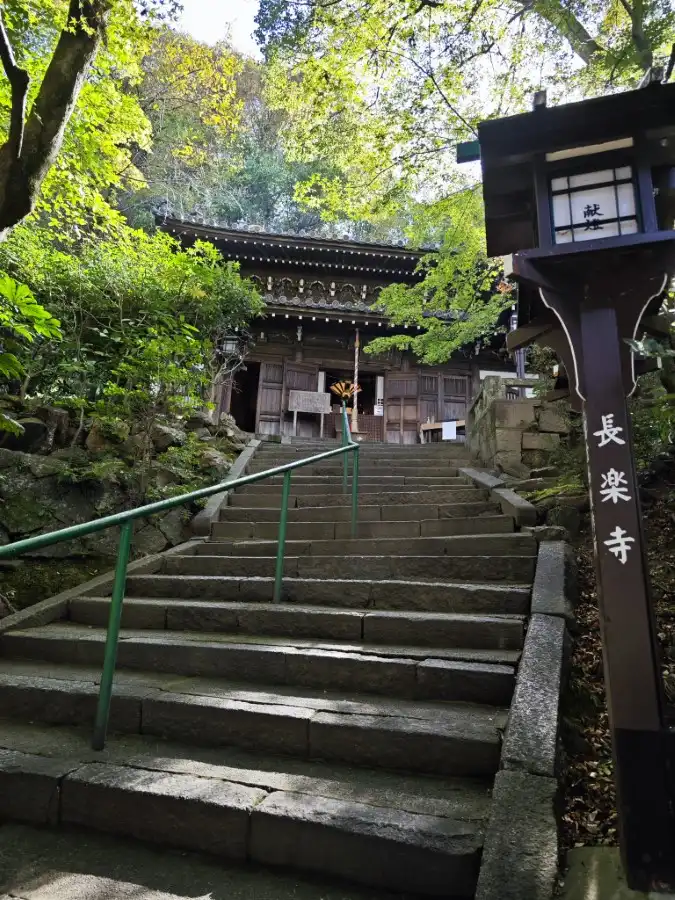
Chorakuji Temple (長楽寺), Kyoto
Chorakuji, a captivating temple in Kyoto, beckons foreign tourists with its enchanting blend of history and spirituality. Nestled amidst Kyoto’s picturesque landscapes, Chorakuji boasts awe-inspiring architecture and serene gardens. Visitors are invited to explore the rich tapestry of Japanese culture through the temple’s symbolic elements and ancient rituals. The tranquil ambiance provides a unique opportunity…
-

Shougoin Monzeki (聖護院門跡)
The history of Shougoin dates back to 1090. When High Priest Zoyo, who served as a forerunner to Emperor Shirakawa’s visit to Kumano, received the temple. Emperor named it “Shogoin” after his achievement of “protecting the Eucharist”. The temple was later moved from place to place in Kyoto due to warfare and fire, but was…
-

88 sacred temples Pilgrimage in Omuro (御室八十八ヶ所霊場)
Behind the Ninnaji Temple, there is a mountain path called Omurojojusan, which is dotted with 88 small Buddhist temples. Ninnaji Temple manages this route. In the Edo period (1603-1868), it was difficult to visit the 88 sacred sites on Shikoku. So in 1827, the 29th Monk of Ninnaji Temple made a request to bring back…
-

Soken-in (総見院), Daitokuji
Soken-in Temple is a sub-temple of Daitokuji Temple. Toyotomi Hideyoshi built Soken-in Temple in 1583 as a memorial to Oda Nobunaga, who fell in the Honnouji Incident. Toyotomi Hideyoshi was the man who united Japan after the death of Oda Nobunaga, following his legacy. In the main hall is a wooden seated statue of Lord…
-
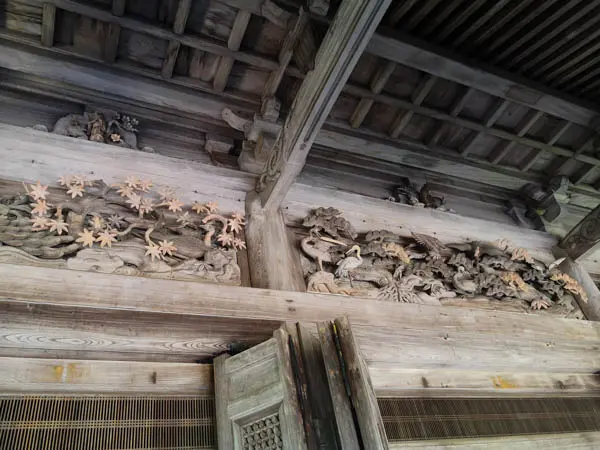
Shorinin Temple (勝林院) in Ohara
Jakugen founded the Shorinin Temple in 1013 as a place to practice Nembutsu (Buddhist chanting) through Shomyo (Buddhist chanting). After the construction of nearby Raigoin Temple about 90 years later, many monks’ quarters surounded the two temples. These temples became a center for many monks to study and practice shomyo (Buddhist chanting). Thus, the temple…
-
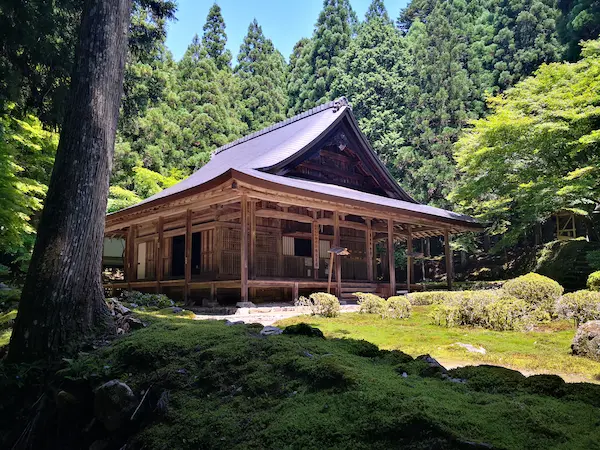
Raigoin Temple (来迎院) in Ohara
Jikaku Daishi Ennin founded the Raigoin Temple in the early Heian period as a center for Tendai Shomyo (Tendai Buddhist chanting). In 1109, Ryonin rebuilt the temple. The reconstruction of the temple resulted in the establishment of the Lower Hall, with Shorinin as the main building, and the Upper Hall, with Raigoin as the main…
-

Jakkoin Temple (寂光院) in Ohara
Jakkoin Temple in Ohara is a nunnery of the Tendai sect of Buddhism. This is the temple where Kenreimonin, daughter of Taira no Kiyomori, spent the rest of her life. History of Jakkoin Temple In 594 Prince Shotoku built the temple to mourn the loss of his father, Emperor Yomei. The first abbot was Tamateru…
-

Sanzenin Temple (三千院) in Ohara
Sanzenin Temple was originally built by Saicho during the Enryaku era (782-806) in the Toto Minamidani (東塔南谷) on Mt. Hiei. Since the late Heian period, the temple has been a monzeki, with the prince and imperial family serving as abbots. The location of the temple has moved several times over time, from within Hieizan to…
-

Danrinji (檀林寺)
Near the Gioji Temple, you can find another temple with the tablet of “Danrinji Monzeki”. This is a fake temple constructed in 1964. And it borrowed a name from a historical temple. Original Danrinji Temple disappeared in the middle of Heian period (check it on Wikipedia). Current Danrinji is not even a reconstruction of the…
-

Sanjusangendo Temple (三十三間堂)
Sanjusangendo is a temple of the Tendai sect located in Higashiyama-ku, Kyoto. Its official name is Rengeoin Hondo (蓮華王院本堂). It is not an independent temple, but the nearby Myohoin Temple administer it. Taira no Kiyomori built this long hall in 1164 under the order of Goshirakawa Joko (ex-emperor). It was later destroyed by fire. But…
-

Shorenin Monzeki (青蓮院門跡)
Shorenin Monzeki is one of the three monzeki of Enryakuji Temple on Mt. Hiei (other two is Sanzen-in and Myoho-in). It is now one of the five Kyoto Monzeki of the Tendai sect. It originated from Shorenbo, a monk’s abode on Mt. Hiei, which at that time was the residence of Saicho, Ennin, and other…
-

Byodoin Temple (平等院)
Byodoin Temple in Uji represents the beauty of Heian Period. It is a Buddhist temple located in Uji City, south of Kyoto City. It is one of the best preserved national treasures in Japan and a World Heritage Site. (Official WEB site) Byodoin was built in the south of Heian-kyo during the mid-Heian period. The…
-

Tanukidani-san Fudō-in Temple (狸谷山不動院)
Tanukidani-san Fudoin is the head temple of Shugendo, the Shingon sect of Buddhism, located in Ichijoji, Sakyo-ku. The main hall of the temple, built in the Kengai-zukuri style (stage style), is located up the hill from Shisen-do Hall and 250 more steps. Templs’s official WEB site The origin of the Temple dates back to the…
-
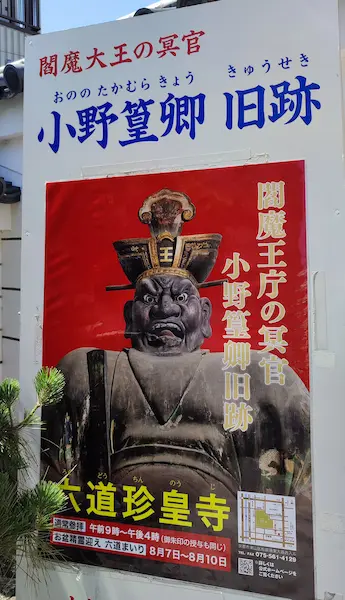
Rokudo Chinnoji (六道珍皇寺)
Rokudo Chinnoji Temple is one of the sub-temples of Kenninji Temple. The main deity is Yakushi Nyorai, but the temple is known for its statues of Ono-no Takamura and King Enma. We cannot take photos of these statues unfortunately. Do you like to see the entrance to under world? Rokudo Chinnoji Temple is the place.…
-

Houkongoin Temple (法金剛院)
Only local people know the flower temple Houkongoin. It is a temple of the Ritsu sect of Buddhism. The Ritsu sect is represented by Toshodaiji temple in Nara, but there are only a few temples. (Temple’s official WEB site) Hokkongoin is located right in front of JR Hanazono Station, making it a very accessible temple.…
-
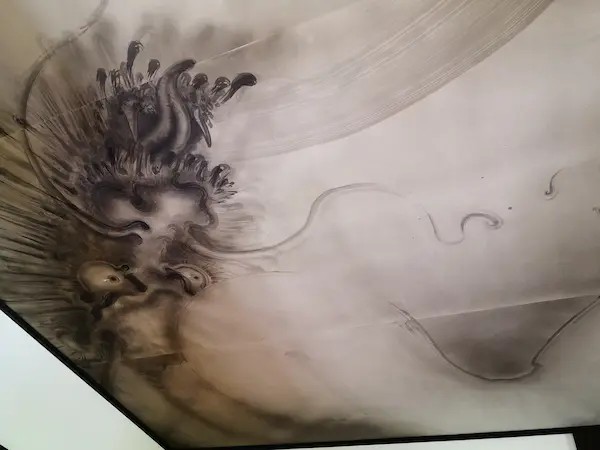
Reigen-in Temple (霊源院)
Reigen-in is one of the sub-temples located in the southeast of the Kenninji temple grounds. It was founded in the Ouei era (1394-1428) by Ryuzan Tokumi, a monk who was invited to found the temple, and his disciple Ichian Ichirin. Reigen-in Temple was the academic core of Kenninji Temple and produced many of the leading…
-

Toji-in Temple (等持院)
History Toji-in Temple is a temple of the Tenryuji school of the Rinzai sect of Zen Buddhism. Although the temple has a long history and is close to Kinkakuji Temple and Ryoanji Temple, it is quiet tourists rarely visit here. Ashikaga Takauji, the first shogun of the Muromachi Shogunate, invited the monk Muso Kokushi and…
-

Kodaiji Temple (高台寺)
Kodaiji Temple is located between the famous Kiyomizu-dera Temple and Yasaka-Jinja Shrine, up the mountain side from a narrow path commonly called Nene-no-michi. Temple’s official WEB site History of Kodaiji Temple Hideyoshi Toyotomi’s wife, Nene (Kita-no-Mandokoro) founded the Kodaiji Temple in 1606 as a place of mourning for Hideyoshi. There are many important cultural assets…
-

Rokuharamitsuji Temple (六波羅蜜寺)
History of Rokuharamitsuji Temple Kuya Shonin, a son of the then Emperor Daigo, founded .Rokuharamitsuji Temple in 951. Kuya Shonin felt life in all things, praised Namu Amidabutsu, and chanted the Nembutsu with joy and dancing, rejoicing in the fact that today exists. Rokuharamitsuji Temple used to have a vast temple complex. And the mansions…
-

Manshu-in Temple (曼殊院)
Manshu-in is a monzeki temple located in Ichijodani. From Enkoji Temple, you will pass through a residential area and walk along a path called Manshuin-do (Manshuin Road), which leads to a wooded area. After passing through there, you will see Manshuin Temple. Manshu-in was originally opened by Saicho as a dojo on Mt. Hiei. It…
-

Kami-Daigo (上醍醐), Upper complex of Daigoji Temple
Daigoji Temple is divided into two parts: the upper part of the temple and the flat area. The flat area is well-known Daigoji Temple. And the upper part is called Kami-Daigo, where the older complex of Daigoji Temple exists. This is the birthplace of Daigoji Temple since 874. Daigo water, which has been gushing since…
-

Shinnyo-do (真如堂)
When you pass through the north gate of Konkai Komyoji Temple, Shinnyo-do Hall is immediately ahead of you. Its official name is Shinsho-Gokurakuji Temple. It is a temple of the Tendai sect, with Hieizan Enryakuji as its head temple. And it was founded in 984. Its common name, Shinnyo-do, refers to the main hall. The…
-

Eikando (永観堂)
Nestled near Nanzenji Temple, Eikando captivates with its Heian-era origins and the revered Looking-back Amidabutsu statue. A must-visit, especially in the enchanting autumn, the illuminated garden reveals Eikando’s timeless beauty. Explore the nearby Nanzenji Temple, famed for its vibrant fall foliage, ensuring an unforgettable Kyoto experience. Just a short distance from Nanzenji Temple, you find…
-

Adashino Nenbutsuji Temple (あだし野念仏寺)
Adashino Nenbutsuji Temple in Kyoto unveils a hauntingly beautiful secret—about 8,000 unmarked small Buddha statues, standing as silent witnesses in its cemetery. This sacred ground, established in 811 by Kukai, tells a tale of reverence and remembrance. The well-preserved bamboo grove behind the temple provides a serene backdrop, offering a perfect escape from the crowds.…
-
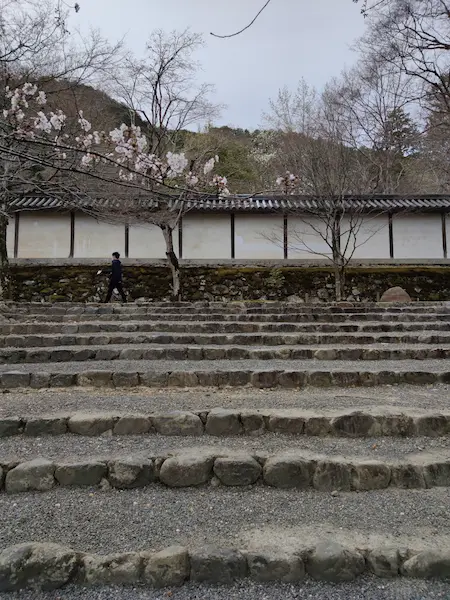
Nison-in Temple (二尊院)
Nison-in Temple is located north of Jojakkoji Temple. Passing through the main gate is a wide path called “Momiji no Baba”. Straight ahead is a wall. The history of Nison-in Temple dates back to the third Tendai Zashu (Ennin). He built the temple in the Jowa period (834-848) at the request of Emperor Saga. Temple’s…
-

Daigoji Temple (醍醐寺)
Daigoji Temple is a World Heritage-designated temple and it is in Fushimi-ku, Kyoto. The temple is located a bit far from the central area of Kyoto, so despite its incredible temple, visitors are limited. It is the head temple of the Daigo school of the Shingon sect of Buddhism. The temple is famous for “Daigo…
-
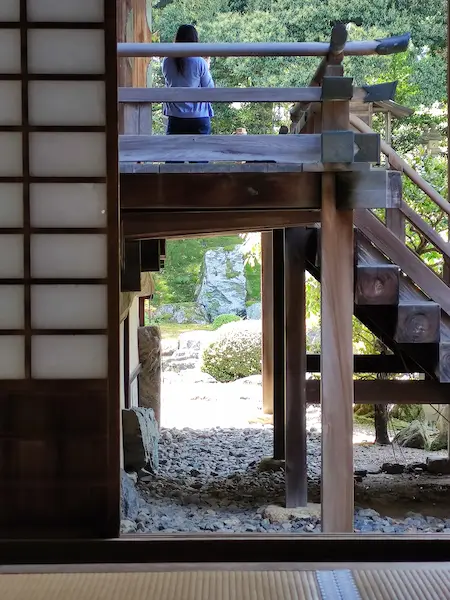
Sanboin Temple (三宝院), Daigoji Temple
It’s history Sanboin, the sub-temple, is entered from the side of the Daigoji Temple reception desk. Sanboin was built in 1115 and served as the main temple where the head priest of Daigoji resided. The present facility was developed after Toyotomi Hideyoshi’s cherry blossom viewing in Daigo in 1598. The garden was basically designed by…
-

Shokokuji Temple (相国寺)
From the Imadegawa Gomon gate on the north side of the Kyoto Imperial Palace, walk north past the Doshisha University campus and you will soon come to Shokokuji Temple. Shokokuji Temple is the head temple of the Shokokuji School of the Rinzai Sect of Zen Buddhism. Temple’s official WEB site The temple was founded by…
-

Toji Temple (東寺)
When the capital moved from Nara to Heian-kyo, the only temples built by Emperor Kanmu were Toji and Saiji. They were built symmetrically across the Rashomon Gate. Later, Saiji and Rashomon were burnt down. And only Toji remained. The division of Toji Temple the only one that retains the division of the temple when Heian-kyo…
-

Kanchi-in Temple (Toji) 観智院
Kanchiin is one of the sub-temples of Toji Temple. It is just inside the Kita-Soumon gate (an important cultural property) of Toji Temple. The path from the Kitasomun is called Kushige-koji, which is said to be the very width of the road in ancient Heiankyo Capital. Kanchi-in is a Shingon school temple. The entrance is…
-

Seiryoji Temple (清凉寺)
Seiryoji Temple, also known as Saga Shakado in Sagano, is a cultural gem awaiting discovery by foreign tourists. Home to the revered Shakyamuni Buddha statue, a national treasure from India, the temple unveils this sacred artifact during special visits. The temple’s origins trace back to Seikaji, the model for Hikaru Genji’s “Saga no Godo” in…
-

Shorinji Temple Bishamon-do (毘沙門堂 勝林寺)
Bishamon-do Shorinji Temple is also one of the sub-temples of Tofukuji Temple. Bishamonten, the guardian of Tofukuji Temple, is enshrined here. The Bishamonten statue is open to the public only during special openings in spring and fall, and by group application. Zazen experience You can experience zazen in this temple. Zazen is a form of…
-

Sekihoji Temple (石峰寺) Temple associated with Ito Jakuchu
Sekihoji Temple is a temple of the Őbaku school of Zen Buddhism. The temple has distinctive Chinese-style gates, which is a characteristic of Obaku School. It is the place where Ito Jakuchu built a hamplet and spent the last years of his life. You can find his cemetery in the temple ground (there is his…
-

Koryuji Temple (広隆寺)
Koryuji Temple is a Shingon Buddhist temple in Uzumasa. The main deity is Prince Shotoku. It was the clan temple of the Hata clan, a migrant tribe, and is the oldest temple in Kyoto that existed before the creation of capital Heian-kyo. The temple hosts a well-known treasure, a statue of Maitreya Bosatsu (Maitreya Bodhisattva)…
-

Ninnaji Temple (仁和寺)
Ninnaji Temple, a UNESCO World Heritage Site in Kyoto, offers a journey through time. Founded in 888, this Shingon Buddhist temple showcases exquisite architecture and cultural treasures. Explore the historic Nio-mon Gate, the revered Kondo (main hall), and the rare five-story pagoda. Delve into the serene gardens, including the Omuro Cherry Blossom Garden. Immerse yourself…